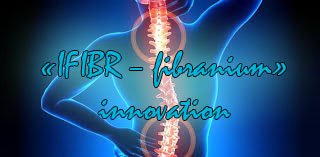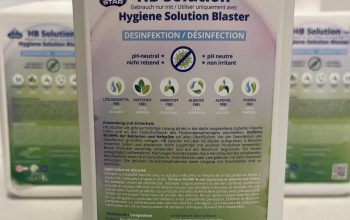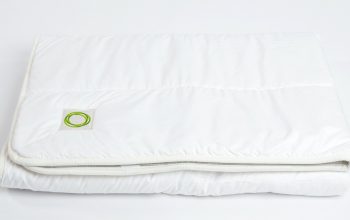
Dr. Lorusso Rossi Alessandro, PhD (Reading) , (IUHAC Paris, California University USA)
Keywords: chronic low back pain, placebo-control, randomised clinical trial, natural minerals, siliconised fibre, nanotechnology, silica, anti-ageing therapy.
The invention – ionnovation mattress pad “IFIBR – FIBRANIUM” – is a product, the use of which promotes rapid relief of chronic lumbar pain, restoration of the nervous system, normalisation of sleep, relief of neuropsychic tension. The product contributes to the normalisation of energy-information processes in the body and can be successfully used as an element of anti-ageing programmes.
This article is devoted to the principles that formed the basis of a breakthrough nanotechnological invention – the innovative mattress pad “IFIBR – FIBRANIUM “.
Chronic pain syndromes of lumbosacral localisation have received a lot of attention in scientific literature. The relevance of the problem is determined not only by medical, but also by social factors. It is known that in 10-20% of patients of working age acute back pain is transformed into chronic pain. This group of patients is characterised by an unfavourable prognosis for recovery and accounts for up to 80% of all health care costs for back pain treatment. According to the criteria of the International Association for the Study of Pain, chronic pain is pain that persists beyond the normal healing period. There have been repeated attempts to identify risk factors for the development of chronic pain and disability. Based on the analysis of prospective studies, medical, ergonomic, psychosocial, and socio-demographic factors of chronic disability associated with lumbosacral pain have been identified. These include: irradiation of pain to the leg combined with a positive Laseg’s symptom; previous episodes of pain in the lumbar region that required seeking medical help; psychosocial aspects of work, especially the patient’s perceptions of the difficulty of the job and his or her own ability to cope with it; the patient’s belief that low back pain is related to working conditions; negative opinions about the prognosis of the disease; and the desire for financial compensation. Gender, age, ethnicity, and education level were not associated with chronic disability due to lumbosacral pain.
The most common causes of lumbar pain are spinal diseases, primarily degenerative-dystrophic (osteochondrosis, deforming spondylosis), and overstretching of the back muscles. In addition, various diseases of the abdominal cavity and pelvic organs, including tumours, can cause the same symptoms as a herniated disc, compressing the spinal root.
It is not by chance that such patients turn not only to neurologists, but also to gynaecologists, orthopaedists, urologists, and above all, of course, to district or family doctors.
Risk factors for lumbar pain are:
– heavy physical exertion;
– uncomfortable working posture;
– trauma;
– cold, draughts;
– alcohol abuse;
– depression and stress;
– occupational diseases associated with exposure to high temperatures (in particular, in hot shops), radiant energy, sharp temperature fluctuations, vibration.
Among the vertebral causes of lumbar pain distinguish:
– radicular ischaemia (discogenic radicular syndrome, discogenic radiculopathy) resulting from compression of the radicle by a herniated disc;
– reflex muscle syndromes, which may be caused by degenerative-dystrophic changes in the spine.
Chronic lumbar pain, both local regional and widespread, does not belong to a single nosological form. It is a universal and typical pathological process characteristic of various diseases of the nervous system, pathology of the musculoskeletal system and internal organs. It is based on a trigger point arising under the influence of a pathological contractile mechanism.
In the pathogenesis of IFIBR, great importance is also attached to the peculiarities of functioning of various CNS departments, which carry out motor and sensory organisation of motor acts, as well as emotional and affective support of the organism’s activity
The product “IFIBR – FIBRANIUM ” is a cotton mat with 30% content of silica fibres, the source of which is a healing earth mined in South Korea, now known as FIBRILIUM, containing a special type of silicon crystals. The hollow siliconised fibre is comparable to natural down in its airiness, comfort and elasticity, therefore the mattress cover from the manufacturer “Elox” GmbH, Austria creates ideal conditions for a healthy sleep.
FIBRANIUM fibre is capable of restoring the flow of energy in the body. It has its own radiation, thus stabilising the body’s energy balance.
FIBRANIUM fibres, together with natural minerals, are used as a filler in a mat (lyocell / 100% wool), which is then used as a cover for an ordinary sleeping mattress, on which you can sleep at night. The hypothesis that this fabric reflects infrared and near-infrared body radiation (wavelength 4-14 nm) was confirmed by an in-depth laboratory study.
In addition to the idea of using FIBRANIUM fibres, the development of “IFIBR – fibranium” is based on the theory of the therapeutic effect on the human body of groups of natural minerals, i.e. natural chemical compounds and their mechanical mixtures, which have high biogenicity, or the ability to ensure interaction between biosubstrates in the implementation of metabolic reactions at the cellular, organ and system level. Their origin is the Western spurs of the highest mountain systems of the planet Earth, the Himalayas.
Among the mineral salts dispersed in the lithosphere, which were subject to clinical and pharmacological study in this study, the most valuable are: native silver with an admixture of gold; the family of platinum metals (platinum and its permanent companions: iridium, osmium, palladium, ruthenium, radium); beryl and its varieties – aquamarine and emerald; corundum with an admixture of chromium – ruby, with an admixture of iron and titanium – sapphire; halogens (bromine, fluorine, chromium, iodine); chalcogenes (sulphur, selenium); alkali (lithium, sodium, potassium) and alkaline-earth metals (magnesium, calcium, barium, beryllium); iron family.
The technology applied in the manufacture of the product “IFIBR – fibranium” meets the requirements of novelty and is used to realise the potential of artificially unreproducible natural minerals.
The application of technology with the use of FIBRANIUM fibres in combination of silicon crystals with groups of natural minerals allowed to achieve a significant increase and expansion of therapeutic, preventive and consumer properties of the product “IFIBR – fibranium”.
Practical significance of the invention
Lower back pain (low back pain, shooting pain, a feeling of aching or pulling in the lumbar region) is a common complaint of patients when visiting a doctor. According to international medical statistics, at least 70 per cent of the population experience such symptoms at least once in their lifetime. In 10 per cent of cases, low back pain attacks become chronic.
If the pain lasts up to 4 weeks, it is called acute, from 4 to 12 weeks – subacute, over 12 weeks – chronic.
The most common causes of lumbar pain (90 to 95%) are disorders of the musculoskeletal apparatus of the back. Such pain is called lumbalgia. In this form, the source of pain can be localised in the area of:
– muscles and ligaments of the back (myofascial pain syndrome),
– the joints of the vertebrae (facet syndrome),
– the sacroiliac joint,
– intervertebral discs (intervertebral disc protrusion, extrusion).
The structure of symptomatology is as follows:
80-85 % – non-specific low back pain. Symptomatology subsides within a few weeks;
10-15% – spinal stenosis, radiculopathy causing nerve root compression;
1-2% – a specific syndrome caused by oncopathology, diseases of internal organs.
Low back pain ranks second in duration and third in frequency of causes of temporary disability among all diseases. Low back pain is one of the most significant medical problems worldwide and is difficult to treat.
It is the solution to the problem of chronic lumbar pain caused by disorders of the musculoskeletal apparatus of the back that has been the focus of many years of scientific research and randomised clinical trials conducted by specialists from Elox GmbH, Austria.
Confirmation of the efficacy of the invention
In order to test and confirm the efficacy of the IFIBR-fibranium product for the claimed purposes, three parallel blind and placebo-controlled randomised studies in patients with chronic low back pain, premenstrual syndrome and arthralgic pain, 50 patients in each study (150 patients in each study) were conducted in accordance with the GCP and in compliance with the Declaration of Helsinki. The study was submitted and approved by the ethics committee in Carinthia with registration number: A35/16.
The study confirmed a very strong clinical effect in this strictly blind and placebo-controlled study over 4 weeks in patients with chronic low back pain.
In addition, the IFIBR – fibranium products were submitted to the Research laboratory of integrative medicine of the International University of Fundamental Learning for independent expertise and preparation for further certification, St. Petersburg, Russia, INTER-UNIVERSITÉ CONSEIL ACADÉMIQUE SUPÉRIEUR, Paris, France and TARPTAUTINIS FUNDAMENTALIŲ STUDIJŲ UNIVERSITETAS, Vilnius, Lithuania.
The aim of the study was to create a system for comprehensive assessment and compensation of the effects of IFIBR- FIBRANIUM products on subjects experiencing pain or discomfort in the lumbar region over a prolonged period of time.
The aim was achieved by solving the following problems:
the effects of using “IFIBR – FIBRANIUM ” and placebo products on the functional state of the subjects were investigated;
a system of diagnostics, analysis and accounting of the dynamics of changes in the functional state of the subjects in a 4-week observation cycle was developed;
regular dynamic examinations of the subjects during the use of “IFIBR – FIBRANIUM ” products were carried out.
The developed system of diagnostics of psychophysiological and somatic status of the study participants was based on a set of modern methods of examination, diagnostics and treatment accepted in physiology of labour, in outpatient and clinical medical practice; including research of the state of analysers, immune and hormonal systems, cardiovascular system, hematopoiesis, etc.
Based on the objectives of the study, methods were used to assess physical performance, functional state of cardiovascular and respiratory systems, vegetative and psychological status, determination of functional reserves of the organism and neurophysiological studies.
It was shown that when using “IFIBR – FIBRANIUM ” products, there was a distinct decrease in the intensity of pain or unpleasant sensations in the lumbar region, the quality of sleep improved and the psycho-emotional background of the subjects increased.
In addition to the above mentioned effects, the persons using the “IFIBR – FIBRANIUM ” product also showed correction of metabolic disorders, vegetative-vascular dysfunctions, normalisation of sympatho-adrenal and parasympathetic system reactivity caused by influence on biologically active points.
When using the product “IFIBR – FIBRANIUM ” there is irritation of skin receptors and, as a result of hypothalamus reaction, smooth muscles of blood vessels are relaxed, as a result of which blood vessels dilate.
In addition, the product “IFIBR – FIBRANIUM ” has relaxing and sedative effect, promotes wound healing, resorption of haematomas, inhibits the growth of diseased cells. It can be used in weight loss programmes, in the treatment of cellulite (expansion of fat cells and water release), helps to normalise sweating, which facilitates kidney function. With sweat, a large number of toxic substances leave the body.
It is necessary to emphasise the fact that 77% of the test subjects had a clear therapeutic effect already at 5-10 minutes (!) after using the IFIBR-fibranium mattress pad, which is an undoubted scientific and technological breakthrough.
The innovative product “IFIBR – FIBRANIUM ” mattress pad is a new and very significant word in the industry of healthy sleep, treatment and prevention of chronic lumbar pain and anti-aging therapy, is an invention that has no analogues.
Literature
- Kuzyukova A.A. Panic attacks in neurological practice / A.A. Ku-zyukova, A.P. Rachin // RMZh. – 2017. – №13. – С. 986-99
- Levin, O.S. From vegetative crises to panic attacks… and back? / O.S. Levin // Modern therapy in psychiatry and neurology. – 2018. – № 2. – С. 4 – 1
- Katon W. Panic disorder: relationship to high medical utilisation, unexplained physical symptoms, and medical costs / W. Katon // J Clin Psychiatry. Katon // J Clin Psychiatry. – 1996. – N. 57. -P. 11-18
- Lifetime prevalence and age-of-onset distributions of DSM-IV disorders in the National Comorbidity Survey Replication / RC Kessler [et al.] // Archives of General Psychiatry. – 2005. – Vol. 62, N. 6. – P. 593-602.
- Podchufarova, E.V. Myogenic back pain: causes of development and methods of treatment / E.V. Podchufarova // RMZh. – 2011. – №30. – C. 1909.
- Ley R. Blood, breath, and fears: A hyperventilation theory of panic attacks and agoraphobia / R. Ley // Clinical Psychology Review. – 1985. – Vol. 5. – P. 271-285
- Bonn J.A. Enhanced adaptive behavioural response in agrophobic patients pre-treated with breathing retraining / J.A. Bonn, C.P. Readhead, B.H. Timmons // The Lancet. – 1984. – Vol. 324, N. 8404. – P. 665-669.
- Vein A.M. Neurogenic hyperventilation / A.M. Vein, I.V. Moldovanu. -Kishenev: Shtiyintsa, 1988. – 188 с
- Yakupov, E.Z. State of integrative systems of the brain in the syndrome of vegetative dysfunction: autoref. disc. …. Dr. of medical sciences: 14.01.11 / Yakupov Eduard Zakirzyanovich. – Kazan, 2006. – 25с.
- Bighelli I. Is the efficacy of antidepressants in panic disorder mediated by adverse events? [Electronic resource] / I. Bighelli, A. Borghesani, C. Barbui // Plos ONE. – 2017. – Vol. 1, N. 6. – Access mode: http://journals.plos.org/plosone/arti-cle?id=10.1371/journal.pone.0178617
- Craske MG. Anxiety / MG. Craske, MB. Stein // Lancet. – 2016. – № 388. – P. 3048-3059.



